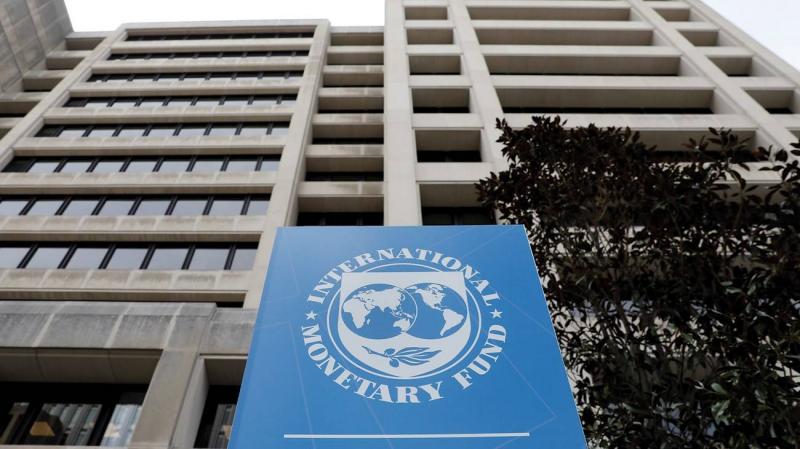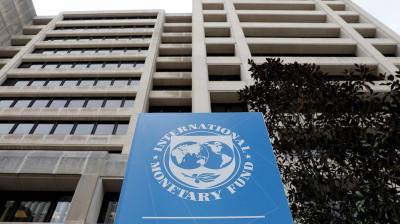The International Monetary Fund announced that its updated forecasts for the World Economic Outlook report in July 2024 are consistent with its previous projections from the April 2024 report, which anticipated global economic growth of 3.2% in 2024 and 3.3% in 2025. The Fund, in its report titled "The Global Economy in a Predicament," pointed out that inflation in service prices is hindering efforts to curb inflation rates, making it difficult to return to normal monetary policies. This has led to increased risks of inflation exceeding expected levels, thereby raising the likelihood of prolonged higher interest rates, amid growing trade disturbances and increasing uncertainty regarding policies. Therefore, a precise sequence of necessary policy combinations should be implemented to achieve price stability and offset the decline in precautionary reserves.
**The Clouds Have Not Yet Cleared**
The Fund indicated that the risks surrounding the outlook remain generally balanced; however, some short-term risks have surfaced, including the potential for inflation to exceed expectations due to insufficient progress in slowing service prices, as well as price pressures arising from renewed trade and geopolitical tensions.
**Volatile Prospects**
The Fund's experts reflect an increase in forecasts for commodity prices, excluding fuel, by 5% in 2024. According to forecasts, energy commodity prices are expected to decline by about 4.6% in 2024, which is lower than previously expected in the April report, reflecting rising oil prices due to severe production cuts implemented by OPEC+ countries, and price pressures that, despite decreasing, remain a concern due to conditions in the Middle East. It is still expected that monetary policy rates in major central banks will decline during the second half of 2024, with varying paces of return to normal policies due to differing inflation conditions.
**Inflation**
According to its latest forecast, the Fund revised down its growth forecast for the U.S. economy to 2.6% in 2024 (0.1 percentage points lower than April projections), reflecting a slower-than-expected start to the economy. It also anticipated that growth would slow to 1.9% in 2025 as the labor market cools and consumption moderates, alongside a gradual tightening of fiscal policy. By the end of 2025, growth is expected to decrease to its maximum potential, closing the positive output gap.
**Middle East and Central Asia**
For the Middle East and Central Asia, oil production and regional conflicts continue to overshadow future prospects. Growth forecasts for Saudi Arabia in 2024 have been revised down by 0.9 percentage points to 1.7%, primarily reflecting the extension of oil production cuts. The Fund projected Saudi Arabia’s economy to grow by 4.7% in 2025. It also projected Egypt's economy to grow by 2.7% this year, a decrease of 0.3% from its previous predictions made in April. For 2025, the expected growth rate is 4.1%, also a decrease of 0.3% from previous forecasts.
**Euro Area**
In the Euro area, activity appears to have reached its lowest point, and in line with the April 2024 forecasts, there is a modest increase to 0.9% in 2024 (an upward adjustment of 0.1 percentage points from April forecasts), driven by stronger momentum in services and higher-than-expected net exports in the first half of the year, with expected growth rising to 1.5% in 2025. This is supported by increased consumption amidst rising real wages, as well as increased investment resulting from eased financing conditions amid gradual monetary policy easing this year.
**Emerging Markets**
The Fund revised its growth forecasts for emerging markets and developing economies upward, with this expected increase arising from stronger activity in Asia, particularly in China and India. For China, growth projections were raised to 5% in 2024, primarily due to a resurgence in private consumption and strong exports in the first quarter. In 2025, GDP is expected to slow to 4.5% and continue to decelerate on a medium-term basis to 3.3% by 2029, due to headwinds from aging demographics and slowing productivity growth. Growth projections for India were also lifted to 7% this year, reflecting improved private consumption expectations, particularly in rural areas.
**Global Trade**
The Fund forecasted global trade growth to rise to about 3.5% annually in the period from 2024 to 2025 (up from near stagnation in 2023), aligning again with global GDP growth. The increase in the first quarter of this year is expected to be modest as manufacturing remains weak. Despite rising trade restrictions across borders, which have harmed trade between geopolitically disparate blocs, the ratio of global trade to GDP is expected to remain stable in the projections. The Fund also predicted that global inflation will continue to decline, with revised forecasts in advanced economies indicating a slowing pace of inflation reduction in 2024 and 2025, as service price inflation is now expected to be more persistent and commodity prices are anticipated to rise.




